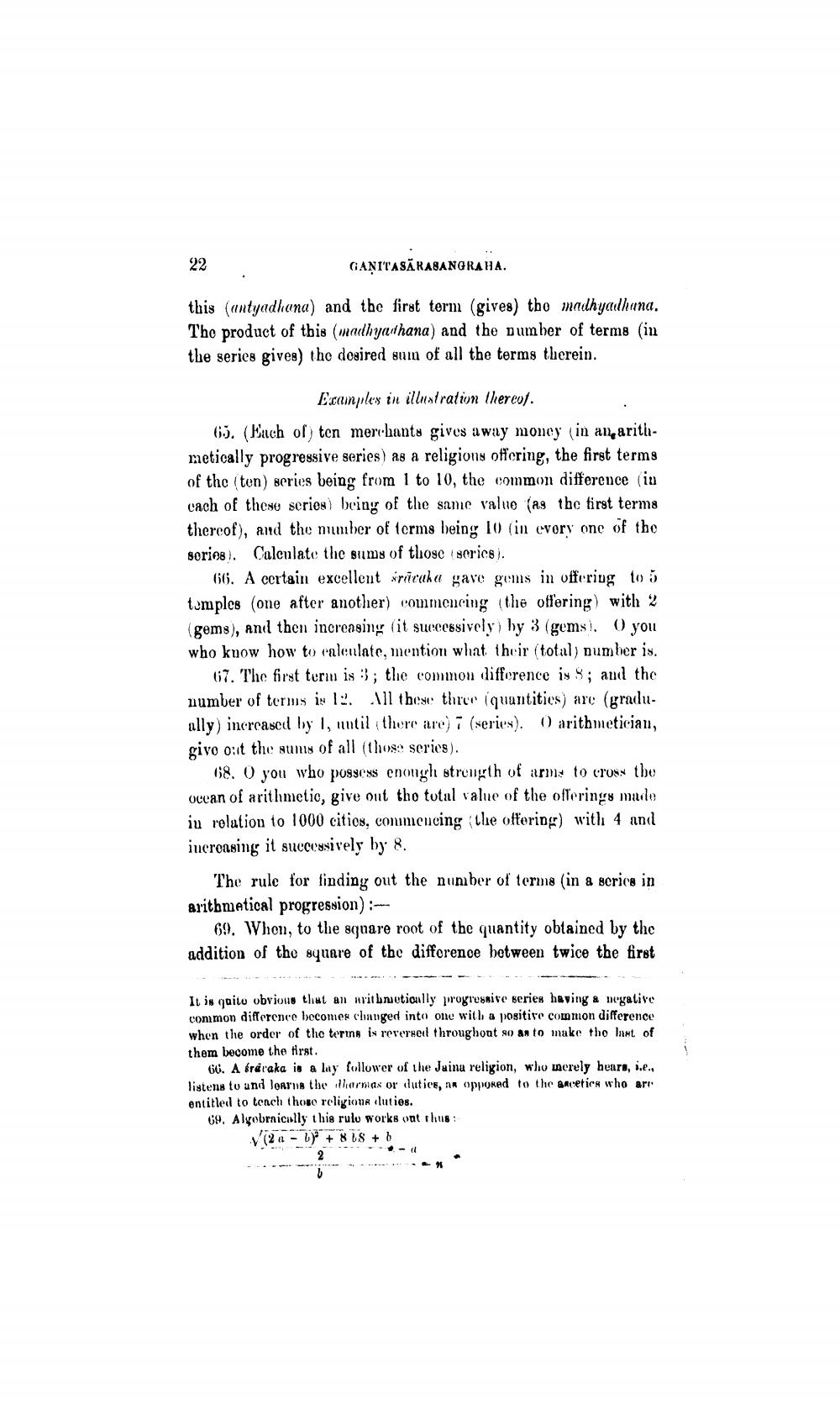________________
22
GANITASĀRASANGRAHA.
this (antyadhuna) and the first term (gives) tho madhyadhuna. The product of this (madhyarthana) and the Dumber of terms (in the series gives) the desired suin of all the terms therein.
E.camples in illustration thereof. 65. (Euch of) ten merchants gives away money in an arithmetically progressive series) as a religions offering, the first terms of the (ton) series being from 1 to 10, the common difference in cach of these series) being of the same value (as the first terms thereof), and the number of terms being 10 (in every one of the soring). Calculate the sims of those scries).
66. A certain excellent sricaha gave gems in offering to 5 temples (one after another) commencing the offering) with 2 gems), and then increasing (it successively, hy 3 (gems). O you who know how to calculate, mention what their (total) number is.
67. The first term is :3; the common difference is $; and the number of terms is 13. All these three quantities) are (gradually) increascd lay 1, antil (there are) 7 (series). O arithmetician, givo o:t the sums of all those series).
68. O you who possess enough strength of arms to cross the ocean of arithmetic, give out the total value of the offerings made iu relation to 1000 cities, conmcucing the offering) with 4 ani iucreasing it successively by 8.
The rule for finding out the number of terms (in a series in arithmetical progression) :
69. When, to the square root of the quantity obtained by the addition of the square of the difference between twice the first
It is quito obvious that an arithnetically progressive series having a negative common difference becomes cluanged into one with a positive common difference when the order of the terms is rerersed throughout so an to make the last of them become the first.
60. A fråraka is a lay follower of the Juina religion, who merely hears, i.e.. listens to and learns the hernias or dutice, as opposed to the datetice who art entitled to teach thoro religiour lutios. 69, Alyobrnically this rulu works oat thus
V'(2a - 2)2 + 80S + b




